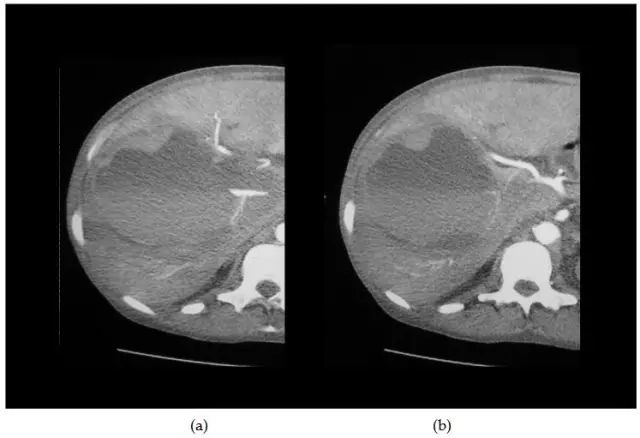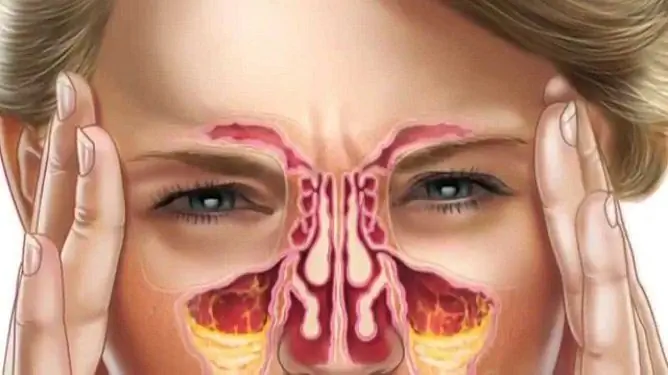- Author Rachel Wainwright [email protected].
- Public 2023-12-15 07:39.
- Last modified 2025-11-02 20:14.
Puncture of the nose with sinusitis: the pros and cons of the procedure
The content of the article:
- Symptoms of sinusitis
- Indications and contraindications for puncture
- How to pierce the sinus with sinusitis
- Pros and cons of the procedure
- Is it possible to avoid a puncture with sinusitis
- Prevention of sinusitis
- Video
The maxillary sinuses are small cavities that are located on the sides of the nasal passages. Their main function is to warm and purify the inhaled air. They are also resonators when pronouncing sounds. The maxillary sinuses are connected to the nasal cavity by small passages, the size of which is no more than 3 mm.

Puncture of the maxillary sinuses is most often prescribed in the absence of the effect of conservative therapy
The inflammatory process in the maxillary sinuses can occur as a result of pathogenic microorganisms entering this area, as well as due to nose injuries or curvature of the nasal septum. The inflammation is accompanied by an accumulation of pus. In this case, a disease such as sinusitis develops.
Symptoms of sinusitis
If the nose is stuffy, the head hurts badly, while the pain sensations increase when bending forward, there is general malaise and an increase in body temperature, then you must definitely consult a doctor, since these symptoms indicate the development of sinusitis. Also, in some cases, the ear may hurt.

The main symptoms of sinusitis are headache, nasal congestion and purulent-mucous discharge from the nasal cavity.
In children under four years of age, the disease does not develop, which is associated with the peculiarity of the structure of the nasal sinuses. They are fully formed only by the age of seven. Children of this age often have acute sinusitis, which occurs as a complication of colds.
The chronic form of the disease in childhood practically does not manifest itself; it develops in adults as a result of improper and untimely treatment. Chronic sinusitis can manifest itself in the same way as acute. But at the same time, the painful sensations are not so pronounced, and the person feels normal.
In order to achieve adequate drainage of the nasal sinuses (to get rid of the accumulation of purulent discharge in a confined space) and to make anti-inflammatory therapy the most effective, a nasal puncture is performed with sinusitis.
The purpose of the puncture is mechanical drainage of the sinus, for which the bone tissue is punctured. After that, the contents of the sinus are released, and the cavity is washed with antiseptics, which gives an additional therapeutic effect.
Repeated puncture is performed only in severe forms of chronic sinusitis. How many times, and in what cases a puncture is indicated, is determined by the doctor.
Indications and contraindications for puncture
A puncture of the maxillary sinuses is prescribed in the following cases:
- lack of effect from conservative therapy. If the patient underwent antibiotic treatment, and medical procedures such as a cuckoo did not help restore the outflow of the contents of the nasal sinuses, then in this case only a puncture can help;
- serious condition of the patient. There are severe headaches or pain in the sinuses that cannot be eliminated with drugs;
- accumulation of blood in the maxillary cavity. Detected by X-ray or computed tomography;
- obstruction of the anastomosis of the maxillary sinus.

X-rays or computed tomography may be ordered before the procedure.
In chronic sinusitis, a puncture allows you to take material for clinical analysis.
Treatment of sinusitis is most often carried out on an outpatient basis, you will have to stay in the hospital only if the disease is very difficult, or complications have appeared. For children, the procedure is carried out very rarely, since the likelihood of complications is higher. In most cases, medication is prescribed.
Puncture of the maxillary sinuses is not recommended in the following cases:
- congenital anomalies of the nasal cavity or maxillary sinuses;
- hypoplasia of the maxillary cavities;
- the presence of an acute infectious disease;
- severe chronic diseases (diabetes mellitus, hypertension, systemic diseases).
How to pierce the sinus with sinusitis
The operation includes several stages. Does the puncture hurt? According to those who suffered a puncture, the procedure is unpleasant. During the puncture of the tissue with a fire, a strong crunch is heard. The sound is perceived too loud, because it is heard as if "from the inside".
Before the procedure, the doctor will administer a local anesthetic. For this, anesthetics and vasoconstrictor drugs are used. The tampon is moistened with the drug and inserted deep into the nasal cavity.

In the photo - a diagram of a puncture of the maxillary sinus using a Kulikovsky needle
For puncture, a device called the Kulikovsky needle is used. It is a long tube, bent in the distal part and equipped with a cannula through which it connects to a syringe. The needle is inserted into the sinus. After the doctor determines the thinnest area in the wall, he pierces it with one movement.
After the doctor is convinced that the needle is located in the lumen of the maxillary sinus, he proceeds to the washing procedure. To do this, he connects a needle to a syringe and directs an antiseptic solution into the maxillary sinus.
The contents of the maxillary cavity, under the influence of the medicinal solution, are liquefied and removed to the outside. Pus and blood from the damaged sinus drain into the tray. Washing is carried out until the washes are transparent without additional impurities, then the needle is removed.
Further treatment is prescribed. In the treatment of sinusitis, drugs of the following groups are used:
- Antibiotics (cephalosporins, macrolides, penicillins). Without these drugs, the treatment of purulent inflammation will be ineffective, since the main purpose of their prescription is to influence pathogenic microorganisms that cause the inflammatory process;
- Antihistamines. Allow to eliminate swelling and reduce the amount of nasal discharge;
- Corticosteroids. Drugs from this group are most often prescribed after antibiotic treatment has been completed and the purulent inflammatory process has been eliminated. These medicines can stop inflammation and edema, get rid of an allergic reaction. They are used for a long period.
Pros and cons of the procedure
The puncture makes it possible to quickly clear the maxillary cavities from the contents and avoid consequences. This allows you to eliminate the oppressive sensation and headache and quickly heal the inflammatory process. Also, the collection of material during the puncture is necessary to determine the causative agent of the disease, which is required for the selection of antibiotics.
Bone tissue recovers quickly after a puncture. Osteoblasts (tissue walls) produce bone matrix, and if bone is damaged, this process is accelerated. Therefore, the hole left after the procedure is quickly overgrown without consequences.
The main disadvantage of the procedure is its soreness. The consequence of a puncture with sinusitis may be an increase in the inflammatory process. In order to prevent its development, antibiotics are used. The drug, regimen and duration of treatment are determined individually.
Is it possible to avoid a puncture with sinusitis
A puncture can be avoided; for this, it is necessary to consult a doctor at the first signs of the disease. Adequate and timely therapy gives a positive result in almost 90% of cases. The most common reason for the appointment of a puncture is untimely treatment.
There are situations when, without puncture and removal of pus, within several hours, serious complications may develop that can threaten the patient's life. Despite the fact that this procedure is unpleasant, it does not pose a health hazard. After the puncture, the tissues are overgrown, and the maxillary sinus takes on its original appearance.
Prevention of sinusitis
Most often, sinusitis occurs as a complication of the common cold, so its timely and effective treatment is important. The development of odontogenic sinusitis is caused by the teeth affected by caries, and therefore it is recommended to regularly visit the dentist and monitor oral hygiene.

The cause of odontogenic sinusitis is teeth affected by caries
Other preventive measures:
- to maintain immunity, this will minimize the likelihood of colds, which are most often the cause of the development of acute sinusitis;
- carry out timely therapy for chronic diseases;
- lead a healthy lifestyle, give up bad habits, eat right.
If a runny nose does not go away within a week and is accompanied by other unpleasant symptoms, you should consult an otolaryngologist.
Video
We offer you to watch a video about a puncture with sinusitis.

Anna Kozlova Medical journalist About the author
Education: Rostov State Medical University, specialty "General Medicine".
Found a mistake in the text? Select it and press Ctrl + Enter.






